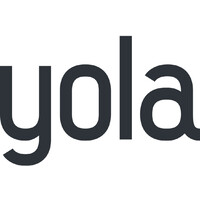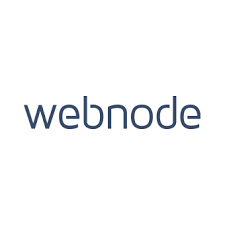ATS Implementation Guide
Proper applicant tracking system (ATS) implementation can significantly bolster your hiring and recruitment processes: Instead of writing endless job descriptions for open roles, manually reviewing resumes, and keeping track of individual candidate experience, modern ATS software combines all of this functionality into a single, intuitive, and automated system.
But there are a lot of options to choose from in the ATS and recruiting software sector. For example, some ATS platforms are compatible with the software your organization already uses (via ATS integrations). Others may not offer an implementation process that is as simple as all that.
This article takes a holistic look at the preparation, testing, and follow-up measures you can take to ensure buy-in and adoption from key stakeholders.
Pre-Implementation Preparation
Before you implement your ATS, steps you can take to maximize your return on investment include clarifying the expected improvement in operations, managing expectations, creating an open channel for feedback, and incentivizing the adoption process.
Present the Before and After Pictures
Identify the current challenges, bottlenecks, and roadblocks your human resources and/or recruiting teams face. To get buy-in from your team members, present how the ATS will alleviate, or improve upon, these talent acquisition challenges.
If, for example, hiring managers find analyzing applications too cumbersome, point out how an ATS will help simplify the screening process.
If you currently have an ATS platform in place and you’re making the case for switching vendors, mention the downsides and shortcomings of the current system. More importantly, identify the specific areas that will be improved by switching to a newer, better platform.
Perhaps the current ATS system doesn’t integrate with your HR software. Explain how switching to one that can alleviates your hiring team from data transfer work once a new hire is onboarded.
Set Expectations of Your ATS Implementation
What exactly do you hope to achieve within the first few days, weeks, and months of using the new ATS? Do you have metrics or milestones to plot the rate of adoption against? How will you measure your ATS ROI?
Also clarify the OKRs of the implementation Are you hoping to transform your entire recruitment and hiring processes, or upgrade particular steps? Is the intention to use additional AI for recruitment or CRM software that will be added at a later stage, or does the ATS system offer these as native features?
If the ATS implementation is intended to alleviate a specific pain point in your talent acquisition funnel, this should be your priority. For example, if you primarily want the ATS to help with sourcing new hires, the number of sourced candidates should also be how you determine success.
If your primary intention is more subjective, for example, to improve candidate experience, you’ll need a definition of success and a process to measure whether you’ve attained it.
The expectations will be very different for enterprise solutions as compared to, for example, applicant tracking systems for small businesses. Aligning the expectations of your ATS with your organizational goals makes it easy for your hiring team and other stakeholders to see the purpose and value of the implementation.
Collect and Integrate Employee Feedback
Whenever impossible, build the ATS implementation process around the input you receive from your team. They are the best party to judge the realistic tempo of implementation, the support required, and the snags along the way.
Maintain an open-door policy regarding concerns. If your hiring managers are worried that the new system will replace their jobs, for example, give them some reassurance by highlighting the new, more meaningful tasks you’ll assign them in lieu of collecting applications.
If they are concerned that working with the ATS will be too cumbersome, collaborate with the vendor to create pre-set dashboards, reports, and workflows that align with your HR team’s preferred processes.
Explain the benefits of automation and intuitive, user-friendly dashboards. Drawing attention to elements like this is a great way to turn their doubt into excitement and drum up even more support for the upcoming change.
Incentivize the ATS Implementation Process
Not only is incentivizing the implementation process a great way to expand employee rewards programs, it might be enough to sway them in favor of the new ATS. Some popular incentives include:
- Monetary bonuses for completing an ATS training program
- Gift cards for each hire made via the ATS
- Company swag or other merchandise (even better if you can get stuff from the vendor)
- Lunchtime or in-office perks when you’ve reached an ATS implementation milestone
Feel free to have fun with the incentives you offer to your team. You can even create a point system or dream up creative award titles for employees to be earned upon the completion of various milestones. If your employees are having fun with the implementation process, they’re more likely to be accepting of the new ATS overall.

Implementation and Customization
Even a thorough pre-implementation process may require some tweaking once the ATS is up and running. Check in with your team continuously (even daily) during the first few weeks to ask what the ATS system does and doesn’t do right.
Because ATS workflows are generally highly customizable, you may want to test a few before deciding on an organizational standard. Some customizations to think about are:
- What automated pre-screening questions should we ask during the application submission?
- What happens to candidates who are eliminated during the pre-screening? Do we keep them in a database?
- How often will we calibrate ATS screening with the preferences of our hiring team?
- What automated communications should candidates receive?
- Will we use templates for automated candidate emails, or write custom emails based on our employer brand?
- Should we ask for any candidate assessments by default? If so, where in the hiring pipeline should this happen?
- What actions, on the part of the hiring team, will trigger a rejection letter, interview scheduling steps, or an offer?
The process of customizing and testing different aspects of customization during your ATS implementation is also a prime opportunity to learn about the features and benefits of ATS software. ATS features vary between vendors, and your new system may provide more powerful solutions than what you’re used to.
Training and Onboarding
In order to maximize the ROI of your new software, it’s important to train, onboard, and acquaint your team with the platform as early on in the implementation as possible.
You won’t be able to gather any meaningful data or determine success until your staff knows how to use the new system, so this is arguably the most important step in the entire ATS implementation process.
Categorize those team members who will be directly involved in the initial implementation process according to the DACI model— a decision-making framework that identifies the most important figures and assigns responsibilities appropriately.
The DACI model includes the following groups and designations:
- Driver: This is the person who drives the decision-making process. Although multiple drivers are sometimes used, the entire process is simplified by relying on one driver for the entire implementation.
- Approver: The approver has the final say over all decisions affecting the implementation.
- Contributors: Staff members who are contributing in some way to the implementation (by providing feedback or hands-on participation) are considered contributors.
- Informed: Teammates with no direct input or influence over the implementation. They are, however, kept up-to-date about the progress. This group likely makes up the majority of your workforce.
The level of training and user access on your ATS system an individual requires will vary according to where they fall within the DACI model.
For higher-ranking individuals, drivers and approvers, professional training with the vendor or a third party may be necessary. Contributors may need less technical training. Your company can use the vendor’s own portal and resources as a training tool for internal orientation sessions before your go-live date.

Testing and Feedback
You’ve established your metrics and benchmarks for the success of your ATS implementation. Now it is time to see if reality measures up.
To make your findings as valuable as possible, separate your metrics into quantitative and qualitative data. If it can be observed, counted, or measured, it’s likely quantitative data. Qualitative data, on the other hand, is usually left open to interpretation.
Examples of quantitative data include your standard recruiting metrics as well as some data related to the use of your ATS:
- Time-to-hire: How long it takes to interview and onboard a new employee
- Cost-per-hire: How much it costs your organization to interview, hire, and onboard a new employee
- New job postings: The number of open roles posted to job boards over a period
- Offer acceptance rate: How many applicants accept your employment offer as a percentage of offers extended
- Qualified candidates: The number of applications that fulfill the candidate specification of a role after ATS screening
- Adoption rate: The number of hires made via the ATS workflow as a percentage of all hires over a period
- Help desk tickets: The number of customer service calls your team makes to the ATS vendor per week or per month for the first few months
Examples of qualitative data include:
- Notes or transcripts taken from candidate interviews
- Employee and candidate survey responses
- Ease and accuracy of data transfer via integrations with your HR software or other tools in your HR Tech stack
- Case studies from other organizations or ATS platforms
- ATS assessments where you submit false resumes (good and bad) to determine whether the ATS is calibrated with your hiring team on what good job applicants look like.
You can use all the quantitative and qualitative data you’ve collected to further optimize your ATS implementation.
If your goal is to improve your company’s overall time-to-hire, for example, you’ll want to find an ATS workflow that removes any redundant or unnecessary tasks in your hiring process.
Make an effort to collect feedback from your hiring team at various stages of the implementation process. Understanding what they like or dislike about the ATS can prove invaluable when customizing the platform or when installing third-party integrations in the future.
Leveraging Analytics & Continued Optimization
After you complete your implementation plan and become comfortable with your new technology, don’t forget to periodically test your ATS and its impact on your hiring efficiency.
In most cases, you should expect a few hiccups along the way– especially if this is your recruitment team’s first time implementing an ATS platform. You may find, for example, that team members create workarounds to avoid features they don’t feel confident using. Additional training should be able to solve this.
Continuously compare your recruiting metrics against the benchmarks of your pre-ATS process or your old ATS. Not only does this make the benefits of your new ATS implementation readily apparent to you, but it makes it easier to present this information to key stakeholders.
Remember, you’re not just convincing your immediate staff of the value of your new ATS– you need to convince the uppermost executives, too.
In general HR Tech does not consist of set-and-forget tools. Revisit your new ATS quarterly to streamline and optimize your application process and hiring funnel.
Installing the updates that are offered by your ATS provider is a good start, but it’s important to collect feedback from your team at regular intervals. Use their comments to guide you through the optimization process and you’re sure to have their support every step of the way.
Final Thoughts on ATS Implementation
A successful ATS implementation will strengthen your talent acquisition and hiring processes in a myriad of ways. While talent acquisition used to rely on manual data entry and tracking methodologies, this simply isn’t a viable option in the modern job market.
The ATS implementation process outlined in this article provides you with all the insight you need to successfully onboard a new ATS into your hiring funnel, ensure its ongoing success, and show ROI to key stakeholders. Besides the success shown by your metric tracking, the value of a new ATS will be evident in the quality of hires your organization is able to make.



























